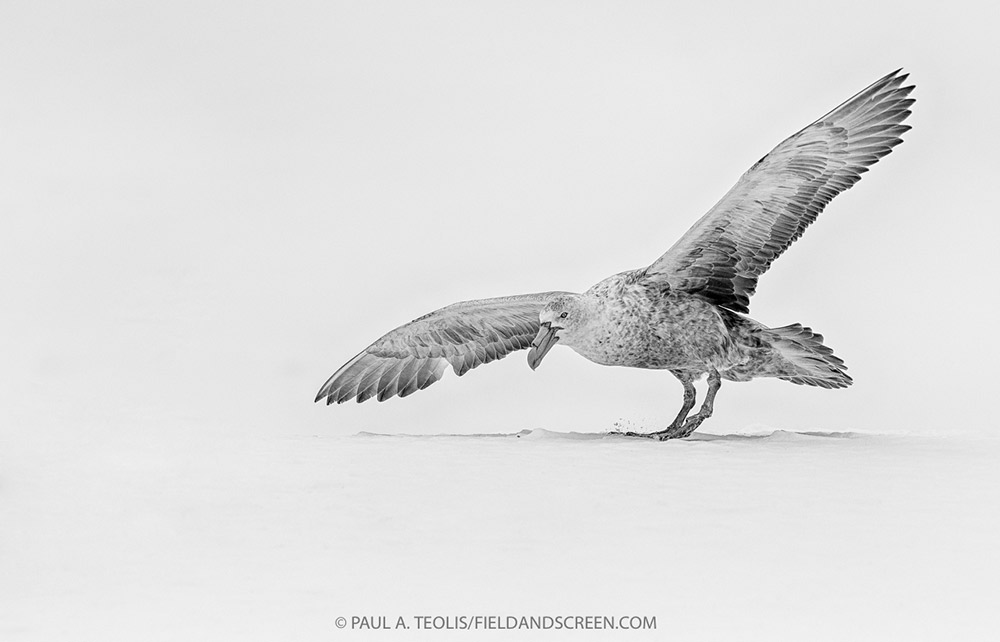
Antarctica in black and white
Antarctica is a place of extremes and photography here is no exception. Photographer Paul Teolis talks about how Antarctica is the perfect setting for black and white photography.
As a landscape and wildlife photographer, I’m trying to tell a story in a single image. I think about composition and framing, about what action (or non-action) is happening, about weather conditions, and about colour –– to name a few considerations. Often, I’m asked about when to photograph in black and white.
In the days of film cameras, we had to carry around separate black and white film, whether it was made by Ilford, Kodak, or Agfa. Nowadays when shooting digitally, it’s a post process conversion using any number of software options available on the market; my choice being a combination of Adobe Lightroom and Nik Software.
But this still begs the question. When to convert a colour image to a black and white one?
Antarctica is the most southern continent on our planet. It’s subject to weather conditions that shift on a dime; the wildlife here has to adapt in order to survive. And because Antarctica is a place of extremes, it is a fitting subject to explore through black and white photography.
Black and white can add a documentary-like feel to your work, and with certain subjects make it feel like it belongs in another time period. For Antarctica, given the location and the tonal ranges from white through to black, an abundance of textures in snow, ice, and the wildlife (think feathers), it is a perfect destination to get creative. Here, you'll often see overcast, cloudy days which are great for landscapes. A subject that already appears monochromatic –– like a penguin or leopard seal –– is a good consideration for shooting in black and white. Equally, high-contrast days with strong, direct sun and dynamic clouds in the sky work very well, too. Expect to see all these conditions in Antarctica.

This was shot on an overcast and grey day. There are no shadows being cast on a fantastic white backdrop of snow. It was an ideal moment to add an illustrative feel to this bird caught while landing.

With blanket of fresh snow and the boat’s driftwood-like quality enriching the texture of the photograph, black and white seems to take you back a century and make you feel like you were there.

Taken in the middle of a snow storm, the ice caked on a gentoo penguin added a surreal quality that black and white simply enhanced.

Feel cold looking at this image? The already snowy and icy conditions are enhanced by shifting to a black and white conversion.
Getting There
G Adventures runs a number of departures in Antarctica encompassing a wide range of departure dates and activities to cater to different tastes. We’re thrilled at the prospect of showing you this big blue planet of ours — check out our small group trips here.






























